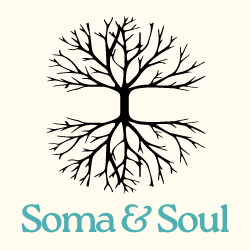The root of the word somatic comes from the Greek sóma (σώμα) meaning body. The word trauma (τραύμα) is also from Greek and means wound.
Somatic trauma therapy is a body-oriented practice. Your bodily sensations will act as a guide to help gradually process stored tension and complete the trauma cycle.
I studied Somatic Trauma Therapy with the Holistic School of Therapy in Edinburgh. The basis of the practice originates from a combination of Somatic Experiencing by Peter A. Levine, and Somatic Trauma Therapy by Babette Rothschild. You can learn more below and via the links provided.
The sessions will begin by attempting to create safety in the body and finding an anchor to come back to. I will guide you through grounding exercises which help to soothe and calm the nervous system. These are important tools which are used if the sensations are too instense.
You will then be asked to notice what’s going on in your body and bring slow, controlled movements to specific areas of tension. This can trigger feelings and memories which might be uncomfortable.
In order to avoid overwhelm, I will track your cues and help you move between activation and grounding. This is called pendulation and is crucial in teaching your body that it is possible to flow in and out of these states at will. Over time you can build up a higher tolerance to a wider range of emotional experiences.
You may experience physical releases of varying degrees, which can include crying, shaking, burping, or sighing. These are all normal reactions, and you will likely feel some relief afterwards.

When faced with a threat, the options we have available are fight/flight/freeze. What we do depends on the situation, as well as our past experiences.
Animals in the wild regularly face threats, but are rarely traumatized. If they are not able to attack (fight), or run away (flight), they will stay still (freeze) and wait for it to pass. Afterwards, the pent-up energy is quickly discharged through shaking or panting. This completes the trauma cycle and means that tension is not stored in the body.
As humans, we are more likely to suppress these natural urges, meaning that we hold on to a lot of what happens to us. There is growing evidence to suggest that this can lead to chronic illness and disease.
Somatic techniques can help by getting you more in tune with your nervous system and its protective processes. Over time these processes should occur more naturally.
“Human beings are born with an innate capacity to triumph over trauma.”
– Dr. Peter A. Levine
